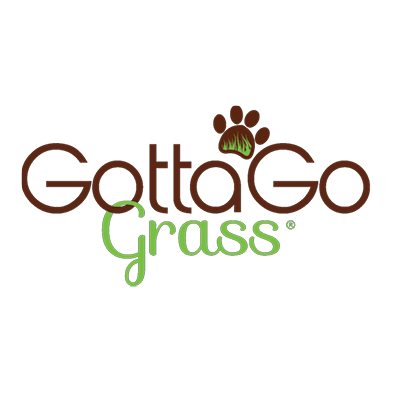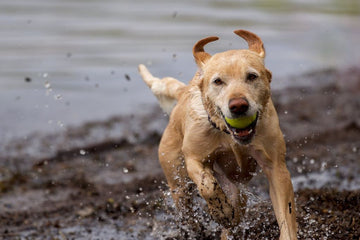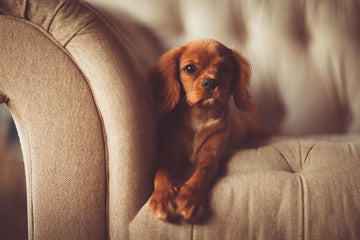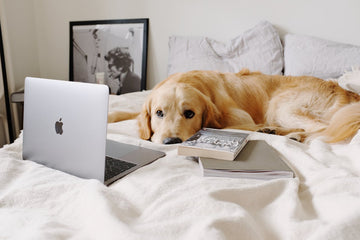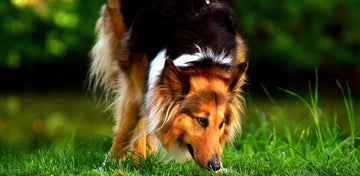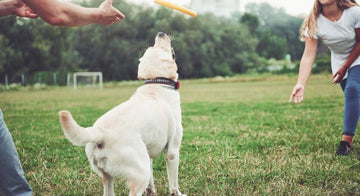
If you believe training your dog requires strict discipline and tough love, here's some news for you.
Dogs respond most effectively to rewards, whether praise, treats, or toys. Positive reinforcement is a method that has long been embraced and proven successful—an approach that revolves around rewarding desired behaviors to encourage repetition. While it may seem straightforward, consistency is key to its effectiveness.
In this article, we'll explore the fundamentals of positive reinforcement in dog training, providing tips on implementing this technique, including using it for potty training with grass pads for dogs.
The Basic Principles of Positive Reinforcement Dog Training
Positive reinforcement, also described as positive training, reward-based, or force-free training, is a method that emphasizes rewarding desired behavior rather than punishing undesired behavior. It involves using rewards, such as treats, verbal praise, physical touch, or life rewards, like playtime or a walk, to reinforce behaviors we want to see more of. By giving rewards when your pet obeys or behaves well, you encourage them to repeat these actions when given the command, as they associate the behavior with something positive.
Although older dogs can learn new behaviors, puppies are particularly receptive to learning and benefit greatly from early house training. The key is to start positive reinforcement as soon as possible, ideally when you first bring your dog home, to establish good habits and build a strong bond with your furry friend. Here are some ground rules for starting positive reinforcement training.

Don't reward unwanted behaviors: While it's clear we shouldn't reward bad behavior, remember that your attention is also seen as a reward. So, avoid acknowledging your dog when they seek attention at inappropriate times. By doing so, you keep them from learning that they can get what they want whenever they demand it.
Don't punish your dog for not listening: Physical punishment can create fear and confusion, making it harder for dogs to understand what you're asking. In some cases, it can also develop aggression, leading to a negative experience and inducing anxiety in your dog. Positive training methods take repetition. Staying patient and consistent will encourage your dog to listen and respond positively to your cues.
Ignore and redirect focus: When your dog displays unwanted behavior, redirect their focus or ignore them until they exhibit the desired behavior. For example, if your dog jumps on you for attention, avoid pushing them away or scolding them. Instead, wait for them to calm down, then reward them for the desired behavior, such as sitting politely. This consistent approach teaches your dog that calm behavior is rewarded while jumping is not.
Reward your dog immediately: Praise or give your dog a treat immediately after they perform the desired behavior. This helps them associate the reward with the action. Consistency is key—reward the behavior every time it occurs, at least initially, to reinforce the behavior. You can gradually reduce the frequency of rewards as the behavior becomes a habit.
Reserve high-value rewards for training: Use high-value rewards to motivate your dog, which can be anything highly desirable to them. Reserve these rewards solely for training sessions to maintain their value and keep your dog engaged and eager to learn, making training more effective and exciting for your dog.
As pet parents, positive reinforcement can aid in practical situations, such as during crate training. By rewarding your dog for going into the crate and spending time inside calmly, you can make it a safe and comfortable space that your dog is willing to go and feel secure in, even when you're not home.

Positive Reinforcement and Puppy Potty Training
When used correctly, positive reinforcement can also be effective in potty training your dog. Rewarding your dog for relieving themselves in the right place, whether during walks or on a dog grass pee pad, can positively reinforce this behavior and help them learn where it's appropriate to potty. Young puppies, in particular, can benefit from frequent trips to the bathroom and being positively reinforced for going to the correct spot, helping them to become potty trained more effectively.
Negative reinforcement, which relies on inflicting injury, pain, or distress to the animal, is unfortunately still common in potty training despite being proven less effective and potentially resulting in long-term behavioral issues. This approach can lead to stress, confusion, and hiding behavior in dogs, where your puppy may wait to relieve themselves until you're not around or use less suitable places.
Positive reinforcement, on the other hand, helps dogs associate successful potty breaks with your praise, making the behavior more automatic. Remember, accidents can still happen even in reliably house-trained dogs. In these cases, avoid scolding your dog. Instead, clean up accidents immediately with an enzymatic cleaner to break down the scent and redirect your puppy to use the appropriate place.

Reinforce Positive Training with Gotta Go Grass® Pads for Dogs
Our range of Gotta Go Grass® indoor grass pads for dogs can help reinforce positive training methods during house training. By providing an accessible, convenient, and sanitary space for your dog to potty, these products create a positive learning environment and instill good behavior. With the right tools and approach, you can effectively potty train your dog and build a strong bond based on trust and positive reinforcement.
Discover a wide range of dog-friendly solutions, including fresh grass pads, waste bags, toys, and other accessories, to support your training journey and ensure a happy, healthy relationship with your furry best friend. Visit the Gotta Go Grass® website today.